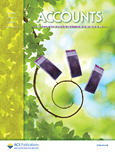
ACCOUNTS OF CHEMICAL RESEARCH
Scope & Guideline
Innovating Connections Between Chemistry and Clinical Practice
Introduction
Aims and Scopes
- Catalysis and Reaction Mechanisms:
A significant focus is on catalytic processes, exploring novel catalysts, reaction mechanisms, and methodologies that enhance reaction efficiency and selectivity. This includes studies on metal-catalyzed reactions, organocatalysis, and enzymatic processes. - Materials Chemistry:
The journal covers the design and synthesis of advanced materials, particularly nanomaterials, metal-organic frameworks (MOFs), and polymeric systems, emphasizing their structural and functional properties for applications in energy storage, catalysis, and biomedicine. - Chemical Biology and Biochemistry:
Research in this area includes the exploration of biomolecular interactions, enzyme mechanisms, and the development of therapeutic agents, highlighting the integration of chemical principles with biological systems. - Quantum Chemistry and Theoretical Approaches:
The journal publishes studies that utilize computational methods and quantum chemistry to predict and analyze chemical behavior, reactivity, and properties of molecules, which aids in the rational design of new materials and catalysts. - Sustainable Chemistry and Green Chemistry:
There is a growing emphasis on sustainable practices in chemistry, including the development of eco-friendly processes, renewable feedstocks, and materials that minimize environmental impact. - Interfacial and Surface Chemistry:
The journal investigates the chemistry at interfaces, including adsorption phenomena, surface modifications, and the role of surface chemistry in catalysis and sensor development.
Trending and Emerging
- Electrocatalysis and Energy Conversion:
Research on electrocatalytic processes for energy conversion, particularly CO2 reduction and hydrogen evolution, has gained significant traction, reflecting the global push towards sustainable energy solutions. - Nanomaterials and Nanoengineering:
There is an increasing focus on the design and application of nanomaterials, including their role in catalysis, drug delivery, and electronic devices, showcasing the importance of nanoscale phenomena in modern chemistry. - Biomimetic and Bioinspired Chemistry:
Studies that draw inspiration from biological systems to design new materials and processes are on the rise, emphasizing the intersection of chemistry and biology in solving complex challenges. - Machine Learning and Computational Methods:
The integration of machine learning and advanced computational techniques in chemical research is rapidly emerging, enhancing predictive capabilities and accelerating the discovery of new materials and catalysts. - Sustainable and Green Chemistry Practices:
A marked increase in research dedicated to sustainable chemistry practices, including waste reduction, renewable resources, and environmentally friendly processes, reflects a growing commitment to addressing environmental challenges.
Declining or Waning
- Classical Organic Synthesis:
There appears to be a waning interest in traditional organic synthesis methodologies, particularly those that do not incorporate modern techniques or innovative approaches, as research shifts towards more efficient and sustainable methods. - Inorganic Chemistry in Isolation:
Research focused solely on inorganic chemistry, particularly studies that do not integrate with materials science or catalysis, has seen a decline as interdisciplinary approaches become more prevalent. - Static Spectroscopy Techniques:
The emphasis on static spectroscopy methods has diminished in favor of dynamic and time-resolved techniques that provide more insight into reaction mechanisms and molecular dynamics. - Traditional Analytical Chemistry:
There is a noticeable reduction in publications centered on classical analytical chemistry methods without a strong connection to new materials or technologies, reflecting a shift towards more innovative analytical approaches.
Similar Journals

JOURNAL OF CHEMICAL SCIENCES
Fostering Collaboration in the World of Chemical SciencesThe JOURNAL OF CHEMICAL SCIENCES, published by the Indian Academy of Sciences, is a premier academic journal that serves the global community of chemists and researchers. With an ISSN of 0974-3626 and an E-ISSN of 0973-7103, this journal is pivotal in disseminating high-quality research across diverse areas of chemical sciences. As of 2023, it holds a respectable Q3 ranking in the field of Chemistry (miscellaneous) and ranks #215 out of 408 in General Chemistry according to Scopus, reflecting its commitment to advancing the discipline. Operating in an open-access format, the journal ensures that research findings are readily accessible to a broader audience, fostering collaboration and innovation. Established in 1980 and continuing to evolve, the journal's scope encompasses fundamental and applied chemistry, and aims to bridge gaps between theoretical and practical applications. With a mission to support the scientific community, the JOURNAL OF CHEMICAL SCIENCES is an essential resource for researchers, professionals, and students alike, providing a platform for the exchange of groundbreaking ideas and discoveries.

ChemCatChem
Catalyzing Knowledge in the Heart of Chemical Science.ChemCatChem is a leading international journal published by WILEY-V C H VERLAG GMBH that has been making significant contributions to the fields of catalysis, inorganic and organic chemistry, as well as physical and theoretical chemistry since its inception in 2009. With an established reputation for excellence, this journal holds commendable rankings in various categories, including Q1 in Inorganic Chemistry and Q1 in Organic Chemistry, demonstrating its pivotal role in advancing scientific knowledge and innovation. Notably, it has achieved a high Scopus ranking, securing 10th place out of 79 in Inorganic Chemistry, among others, showcasing its influence and quality. Although open access options are not available, the journal offers cutting-edge research articles, reviews, and insights that are vital for researchers, professionals, and students aiming to stay at the forefront of chemical science. With its address rooted in Weinheim, Germany, and convergence projected to continue until 2024, ChemCatChem remains a dynamic platform for disseminating vital advancements within the chemical community.

ACS Catalysis
Connecting Chemists to Catalytic BreakthroughsACS Catalysis, published by the American Chemical Society, stands as a premier journal in the field of catalysis, offering a vital platform for researchers, professionals, and students focused on advancing the science of catalysis and its applications. With an impressive impact factor placing it in the Q1 category for both Catalysis and Chemistry (miscellaneous), this journal has established itself as a leading source of high-quality research findings, currently ranking #21 out of 408 in General Chemistry and #9 out of 68 in Catalysis according to Scopus. Since its inception in 2011, ACS Catalysis has aimed to publish innovative research that addresses the critical challenges in catalytic processes, advancing our understanding of both fundamental and applied aspects of catalysis. With a commitment to promoting open scientific discourse, it serves a vital role for those interested in the latest methodologies, discoveries, and trends in this essential discipline. Based in Washington, DC, ACS Catalysis continues to uphold the highest standards of scholarship and collaboration within the vibrant community of chemists and engineers worldwide.

Journal of Industrial and Engineering Chemistry
Elevating Knowledge in Chemical Engineering PracticesThe Journal of Industrial and Engineering Chemistry, published by Elsevier Science Inc, stands as a premier platform since its inception in 1996, dedicated to the dissemination of innovative research in the field of Chemical Engineering. Located in South Korea, this influential journal has established itself with an impressive impact factor and is categorized in the Q1 quartile for chemical engineering (miscellaneous), ranking in the top 12% of its category according to Scopus. With a focus on cutting-edge industrial applications, the journal covers a diverse range of topics including chemical processes, engineering innovations, and sustainable practices, appealing to a broad spectrum of researchers, professionals, and students. Although currently not open access, the journal offers a wealth of resources for advancing knowledge and driving forward the chemical engineering discipline. The converged years from 1996 to 2024 reflect its ongoing commitment to excellence and timeliness in publishing high-quality research.

Reactions is a dynamic open-access journal published by MDPI, dedicated to the advancement of research in the fields of Chemical Engineering and Chemistry. Launched in 2020, the journal aims to provide a platform for scientists and researchers to share their findings and innovations, facilitating the synthesis and dissemination of knowledge within the global academic community. With an impact factor that reflects its growing influence, Reactions ranks 47th in the Chemical Engineering category and 72nd in Chemistry on Scopus, placing it within the vibrant landscape of contemporary chemical research. Housed in the picturesque city of Basel, Switzerland, the journal is committed to open access, ensuring that its high-quality content is readily available to all. This commitment not only enhances visibility but also fosters collaboration among researchers, professionals, and students striving to push the boundaries of chemical sciences. As we look towards 2024 and beyond, Reactions continues to encourage submissions that explore groundbreaking methodologies, innovative applications, and transformative theoretical frameworks in chemistry and chemical engineering.
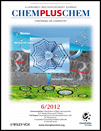
ChemPlusChem
Unlocking the Future of Chemistry, One Article at a TimeChemPlusChem is a premier journal published by WILEY-V C H VERLAG GMBH, dedicated to the vibrant field of chemistry. With an ISSN of 2192-6506 and an impressive Q1 ranking in Scopus's 2023 category for miscellaneous chemistry, this journal serves as a significant platform for the dissemination of high-quality research and innovative findings. Since its inception in 2012, ChemPlusChem has fostered interdisciplinary collaborations, encapsulating a wide array of topics within chemistry that facilitate scientific advancement and education. The journal features a robust open access system, enabling extensive visibility for authors while providing easy-to-access resources for researchers, professionals, and students globally. Located in Weinheim, Germany, ChemPlusChem reflects international standards and ambitions, striving to enrich the global scientific community through rigorous research and engaging scientific discourse.
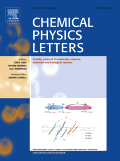
CHEMICAL PHYSICS LETTERS
Advancing the Frontiers of Chemical PhysicsCHEMICAL PHYSICS LETTERS, published by Elsevier, is a prestigious journal that has been at the forefront of advancing knowledge in the fields of physical and theoretical chemistry and physics since its inception in 1967. With an impressive impact factor reflective of its high-quality research output, this journal holds Q2 quartile rankings in both the Physical and Theoretical Chemistry and Physics and Astronomy categories for 2023. It is recognized as a key platform for disseminating groundbreaking findings, with Scopus rankings placing it within the top 76th and 66th percentiles in its respective categories. Researchers and professionals benefit from its insightful contributions and rigorous peer-review process, making it an essential resource for those engaged in cutting-edge chemical physics studies. Although the journal is not open access, it remains accessible through various institutional subscriptions, ensuring that a wide audience can explore its wealth of knowledge. Located in Amsterdam, Netherlands, the journal continues to drive innovation and collaboration across diverse scientific disciplines.

COMPTES RENDUS CHIMIE
Innovating Chemistry: Your Gateway to Cutting-Edge Research.COMPTES RENDUS CHIMIE, published by the prestigious Académie des Sciences in France, stands as a significant journal in the fields of chemistry and chemical engineering. With an ISSN of 1631-0748 and an E-ISSN of 1878-1543, this open-access journal has been committed to disseminating high-quality research since its transition to open access in 2020. Featuring a diverse array of studies, the journal covers innovative research trends and applications, while maintaining a Q3 category ranking in both Chemical Engineering (miscellaneous) and Chemistry (miscellaneous) as of 2023. Its Scopus rankings, positioning at #251 out of 408 in general chemistry and #169 out of 273 in general chemical engineering, highlight its growing impact within the scientific community. Authored by a global cohort of scientists and researchers, COMPTES RENDUS CHIMIE is dedicated to the advancement of knowledge and sharing insights that are vital for ongoing research and development in the chemical sciences. Located in the heart of Paris at 23 Quai de Conti, 75006, France, the journal is an essential resource for those passionate about chemistry and engineering disciplines, fostering collaboration and innovation across the world.
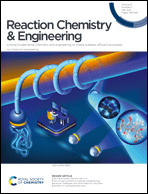
Reaction Chemistry & Engineering
Unlocking Potential in Reaction Chemistry & EngineeringReaction Chemistry & Engineering is an esteemed journal published by the Royal Society of Chemistry, dedicated to advancing the field of chemical engineering. With a focus on pivotal topics including catalysis, process technology, and fluid flow, this journal serves as a critical platform for researchers and professionals seeking to disseminate innovative findings and methodologies. As of 2023, it boasts impressive impact factors, ranking Q2 in Catalysis and consistently appearing in the Q1 categories for several related fields, thus recognizing its influence and relevance in the scientific community. With Scopus rankings placing it among the top 30 journals in multiple chemical engineering categories, Reaction Chemistry & Engineering encourages open dialogue and collaboration among scientists aiming to overcome contemporary challenges in chemical processes. This journal is vital for anyone involved in the development and application of chemical engineering, providing essential insights and fostering progress in this dynamic discipline. Explore the latest research and contribute to future innovations by engaging with the cutting-edge work presented in Reaction Chemistry & Engineering.
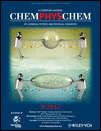
CHEMPHYSCHEM
Exploring the Synergy between Atomic Insights and Molecular InnovationsCHEMPHYSCHEM, published by WILEY-V C H VERLAG GMBH in Germany, stands as a pivotal resource for researchers and professionals in the fields of Atomic and Molecular Physics, as well as Physical and Theoretical Chemistry. With a commendable impact across its converged years from 2000 to 2024, the journal is categorized in the second quartile (Q2) for both aforementioned fields according to the 2023 metrics, underscoring its significance in advancing scientific dialogue and research. CHEMPHYSCHEM is committed to disseminating high-quality, peer-reviewed research articles that delve into the intricate interplay between chemistry and physics, making it an essential read for students and experts alike. The journal does not currently offer open access options, allowing for focused scholarly discussions that cater to the academic community's needs. As reflected in its Scopus rankings, CHEMPHYSCHEM maintains respectable standings, ranking #84/224 and #90/189 in its respective categories, demonstrating its commitment to high-impact research and innovation.